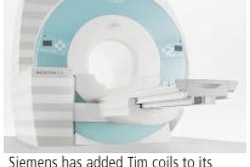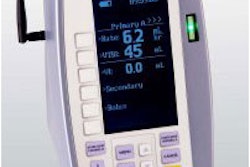CHICAGO - Researchers have successfully used a noninvasive distraction device that helps separate the tibial and talar surfaces during imaging so that the cartilage of each can be more accurately assessed, according to a presentation Sunday at the RSNA meeting.
The novel MRI-compatible device is essentially a leg brace with an ankle loop that can be tightened to apply up to 40 lb of pulling force to separate the surfaces, according to Dan Thedens, Ph.D., an MR physicist and assistant professor at the University of Iowa in Iowa City.
Up to four versions of the device have been created by Iowa orthopedic surgeon Tom Baer, who has no current plans to commercialize it, Thedens said in a postpresentation interview with AuntMinnie.com.
The device has also been used during CT imaging to space out the ankle joint for injections, he said.
Seven healthy volunteers have been examined with the device in action, including Thedens. Instead of pain in the unafflicted ankle, the 20- to 25-lb force typically applied causes a sensation "like your foot is falling asleep," Thedens said.
In their study, the researchers compared 3-tesla MR images of the ankle taken with and without the device to gauge the potential improvement in visualization and contrast between tibial and talar cartilage. Their imaging protocol involved an extremity coil and a 3D FLASH sequence incorporating a water-only excitation with isotropic resolution over a 12 x 12 x 10 cm3 field-of-view.
To gauge the impact of the distraction force, the researchers defined 25 uniformly distributed profile lines in comparative images. They found that the tibial and talar surfaces could be distinguished in 83% of the samples in the distracted images, compared to only 55% in the conventional images.
The average amount of distraction ranged from 0.5 to 2.0 mm over the seven subjects. While that amount isn't huge, Thedens acknowledged, it was noticeable on images shown during his presentation.
Overall, the group concluded that noninvasive distraction during 3-tesla MR imaging "is capable of greatly improving separation and contrast between tibial and talar cartilage surfaces."
The improved visualization may be beneficial in evaluating ankle biomechanics and suspected cartilage damage, Thedens said. Further research will compare the cartilage thickness measurements made in distracted and conventional images, he said, and may require a cadaver study for a reference standard.
By Tracie L. Thompson
AuntMinnie.com staff writer
November 28, 2005
Related Reading
Tibial-talar ratio on x-ray reliably shows ankle alignment, May 6, 2005
MR keeps stress fractures from becoming career wreckers, December 9, 2004
MRI, US make sense of disorganized scar tissue in PTTL injuries, October 29, 2003
Copyright © 2005 AuntMinnie.com



















